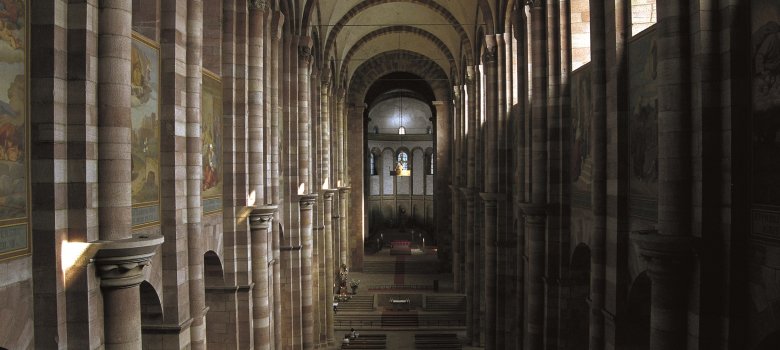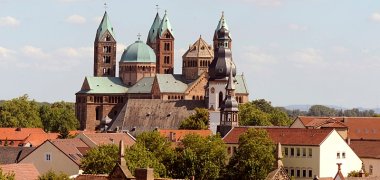The Speyer Cathedral

In the 1020s – the exact year cannot be determined – Konrad II started construction with the goal of building the biggest church of his era. After 30 years of construction, the Lord’s newest house was dedicated in 1061. With this monumental construction in what was then the very small city of Speyer, the ruler wanted to demonstrate his religio-political claim to power against the papacy. As early as the 1080s, Henry IV authorised renovation and expansion of the church in order to further improve the appearance and splendour of the building. His architects succeeded at such innovations as a system of blind arches and a circumferential gallery for the first time in architectural history.

The clan of Salians chose the cathedral as their burial site. Today, it is the final resting place for eight Salian, Staufer and Habsburg emperors and kings, four queens and a series of bishops. The crypt which was dedicated in 1041, is the oldest component of the cathedral. The grave sites, which originally lay in the nave, were relocated to the crypt in the course of renovation measures undertaken between 1900 and 1906.
After the destruction in 1689 during the Palatine war of succession and the cathedral’s reconstruction in the 18th century, the Bavarian King Ludwig I allowed the interior to be painted in the late Nazarene style. In the 1950s, restorers removed the painting of the 19th century with the exception of the Maria cycle by Johann Schraudolph.
In 1981, UNESCO accepted the cathedral as the second German landmark in its list of “World Heritage Sites”. The Imperial Cathedral (St. Maria and St. Stephan) is the cathedral of the bishopric of Speyer.
The Crypt – Resting Place of German Emperors and Kings
The crypt, which has been preserved unaltered, is also worthy of attention. It is the gravesite of eight German emperors and kings, four queens and a series of bishops.
Emperor’s Hall and Observation Platform
In the newly furnished Emperor’s Hall, there are nine frescoes by Johann von Schraudolph to be seen. They were removed from the Cathedral from 1957 on in the course of its restoration in order to more…
Cathedral Bowl, Cathedral Garden and Mount of Olives
On the plaza in front of the main entrance to the Cathedral stands the cathedral bowl. Originally, it marked the border between the sovereign territories of the bishop and the city.

